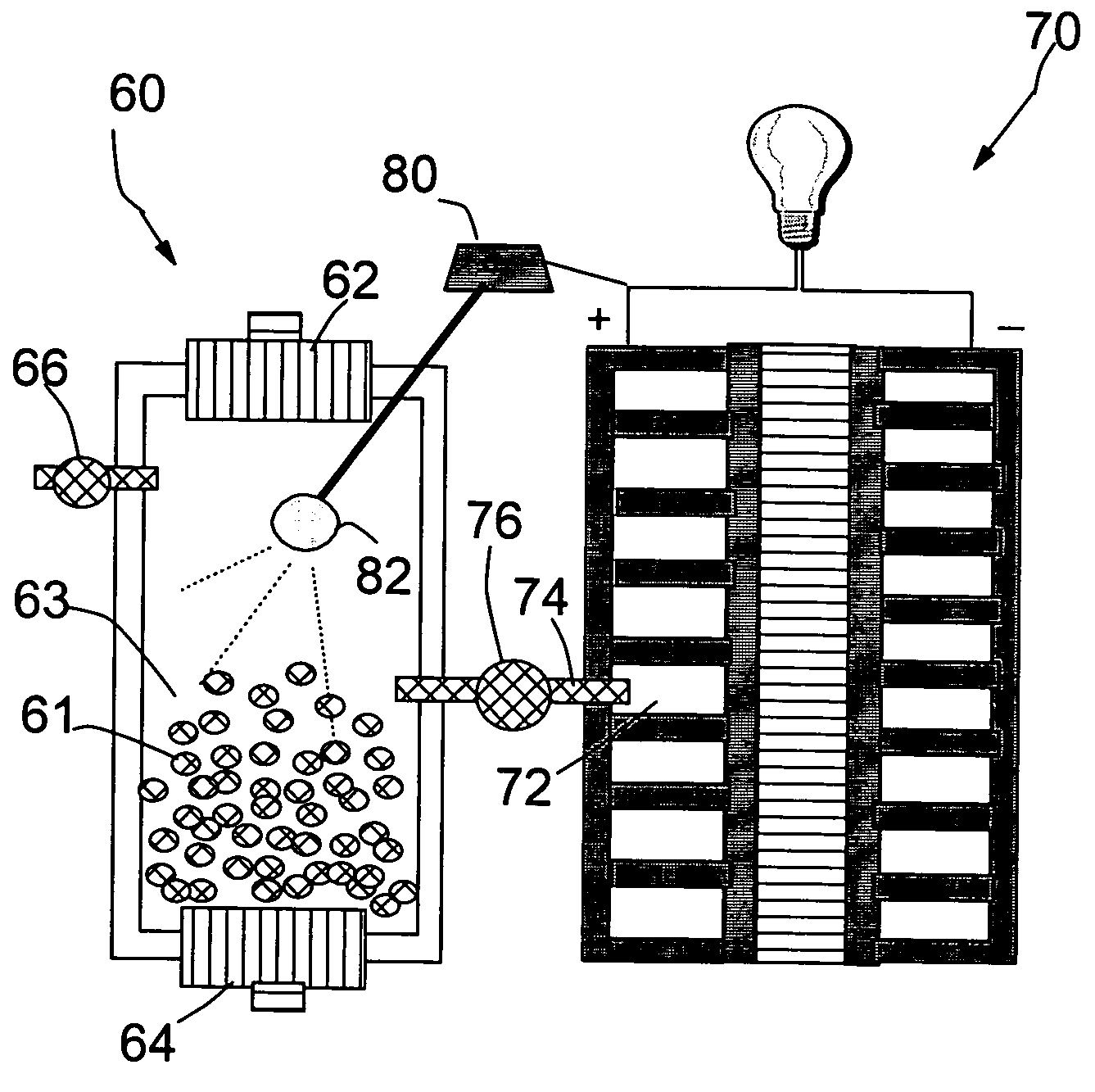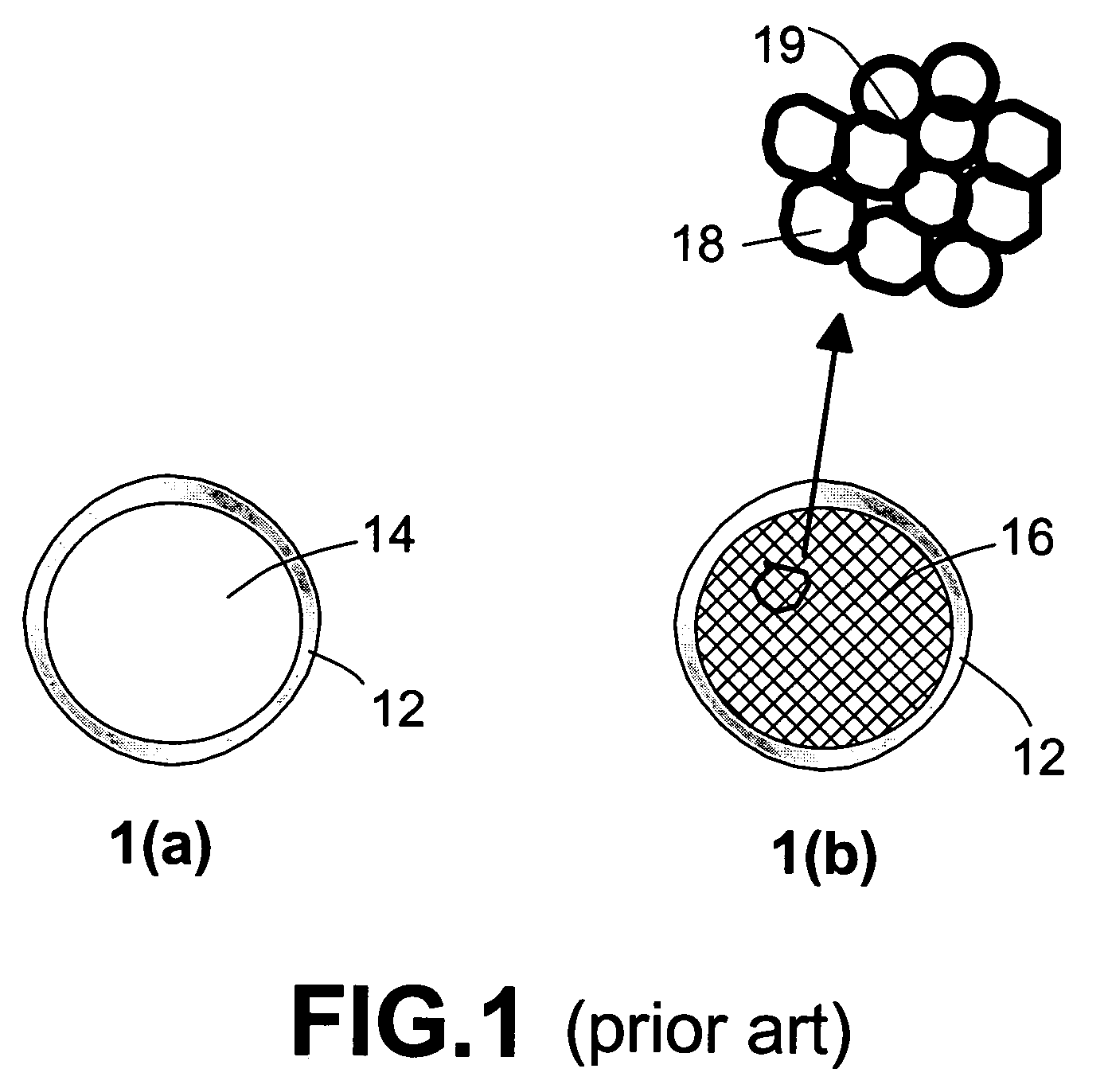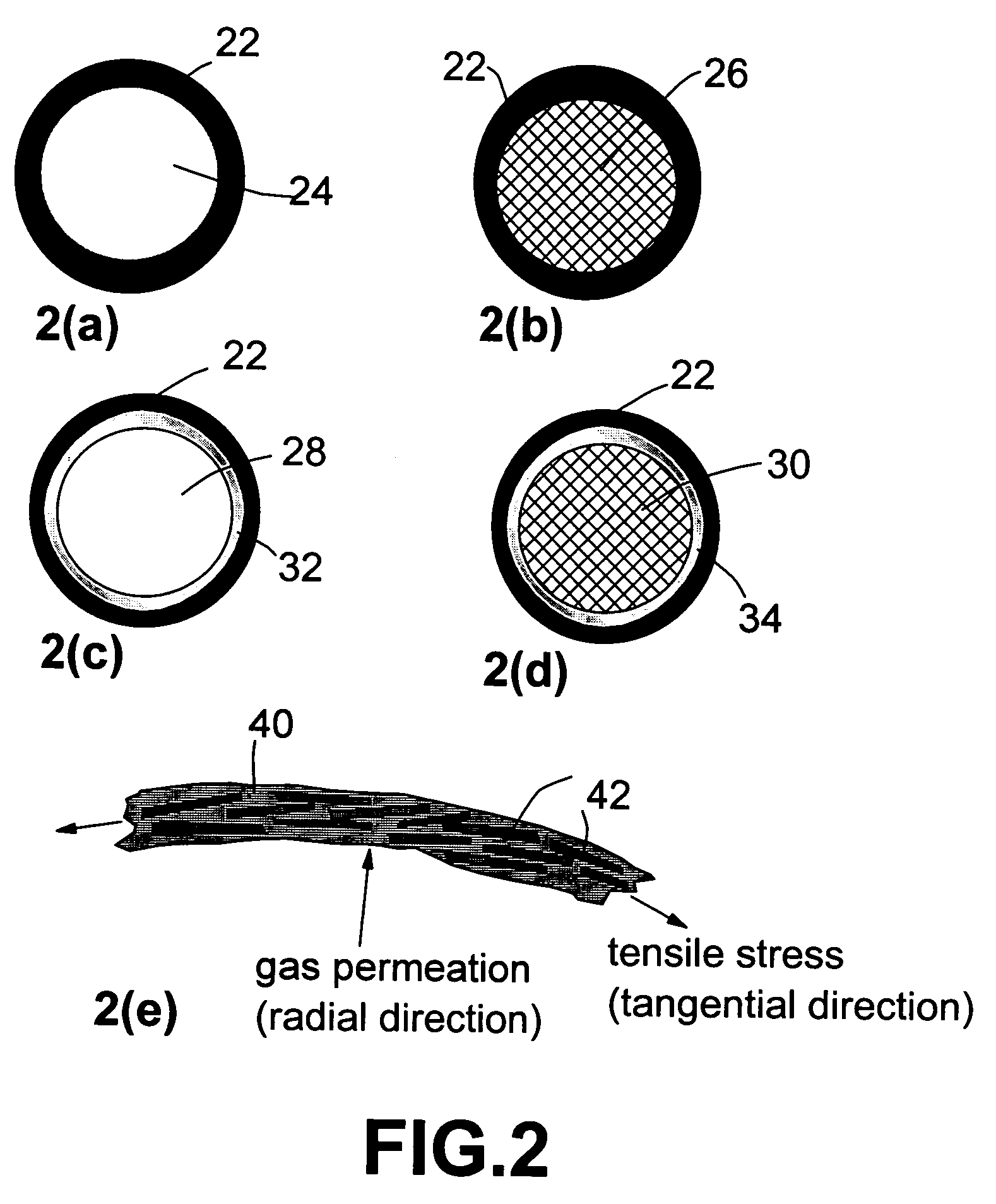Nanocomposite compositions for hydrogen storage and methods for supplying hydrogen to fuel cells
a technology of hydrogen storage and compositions, applied in the direction of packaging, natural mineral layered products, synthetic resin layered products, etc., can solve the problems of unsafe and not portable, lack of an acceptable lightweight and safe hydrogen storage medium, and high cost of liquefied hydrogen super-insulating materials
- Summary
- Abstract
- Description
- Claims
- Application Information
AI Technical Summary
Benefits of technology
Problems solved by technology
Method used
Image
Examples
example 1
Preparation of Nano-Scaled Graphene Plate (NGPs) Based Nanocomposites
[0050]Natural flake graphite with an average size of 500 μm was subjected to an acid treatment by preparing a mixture of concentrated sulfuric acid and nitric acid at a 4:1 ratio, mixing a desired amount of graphite flakes in this acid mixture, and stirring the resulting “slurry” continuously for 16 hours. The acid-treated graphite sample was washed with water and then dried at 90° C. to remove water. The dried particles were then placed in a furnace preset at 650° C. for 2 minutes to obtain exfoliated graphite, which was then subjected to a mechanical attrition using a high-intensity planetary ball mill for 24 hours to produce NGPs. Portions of this NGP sample were then mixed with a matrix polymer or monomer to prepare several master batches of NGP-based nanocomposite coating compositions:[0051]Master batch (A): Suspensions comprising NGPs+Polystyrene+toluene[0052]Master batch (B): Mixtures of NGPs+epoxy resin+cur...
example 1-a
From Expandable Polystyrene Beads
[0054]The production procedures for foamed plastics are adapted herein for the preparation of porous plastic beads. Micrometer-sized polystyrene (PS) beads were subjected to a helium gas pressure of approximately 7 atm and a temperature near 90° C. (inside a pressure chamber) for two hours, allowing helium gas molecules to diffuse into PS beads. The chamber was then cooled down to room temperature under a high helium gas pressure condition to seal in the gas molecules. These gas-filled beads were then placed in an oven preset at 110° C., allowing the supersaturated gas molecules to try to diffuse out and, thereby, producing micro-porous PS beads or “foamed” beads. These micro-porous beads were then poured onto a suspension of [NGPs+PS+toluene] (Master batch (A)) and stirred for approximately 5 minutes until essentially all beads were coated with a uniform thin film of this suspension. The fluid system was then subjected to a continuous ultrasonic wav...
example 1-b
From Expandable Coated-Polystyrene Beads
[0055]Again, the production procedures for foamed plastics are adapted herein for the preparation of porous plastic beads coated with a nanocomposite shell. Micrometer-sized polystyrene (PS) beads were poured onto a suspension of [NGPs+PS+toluene] (Mater batch (A)) and stirred for approximately 5 minutes at room temperature until essentially all beads were coated with a uniform thin film of this suspension. (One must bear in mind that toluene is a good solvent for polystyrene and, hence, the toluene proportion must be kept to a minimum) The fluid system was then subjected to a continuous ultrasonic wave treatment (sonification) while the solvent (toluene) was being removed under a ventilated chemical hood. The resulting nanocomposite-coated PS beads, after solvent removal, were then subjected to a helium gas pressure of approximately 7 atm and a temperature near 90° C. (inside a pressure chamber) for three hours, allowing helium gas molecules ...
PUM
| Property | Measurement | Unit |
|---|---|---|
| aspect ratio | aaaaa | aaaaa |
| thickness | aaaaa | aaaaa |
| thickness | aaaaa | aaaaa |
Abstract
Description
Claims
Application Information
 Login to View More
Login to View More - R&D
- Intellectual Property
- Life Sciences
- Materials
- Tech Scout
- Unparalleled Data Quality
- Higher Quality Content
- 60% Fewer Hallucinations
Browse by: Latest US Patents, China's latest patents, Technical Efficacy Thesaurus, Application Domain, Technology Topic, Popular Technical Reports.
© 2025 PatSnap. All rights reserved.Legal|Privacy policy|Modern Slavery Act Transparency Statement|Sitemap|About US| Contact US: help@patsnap.com



